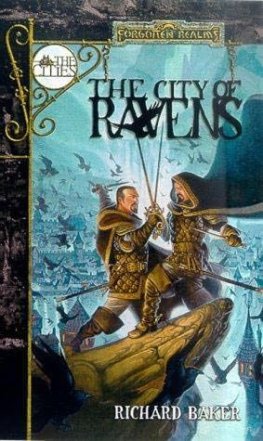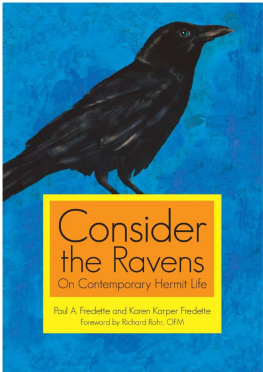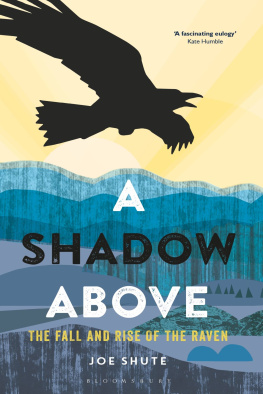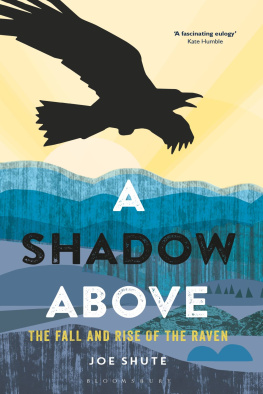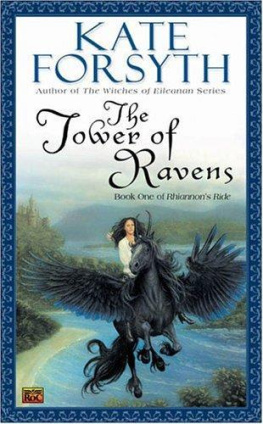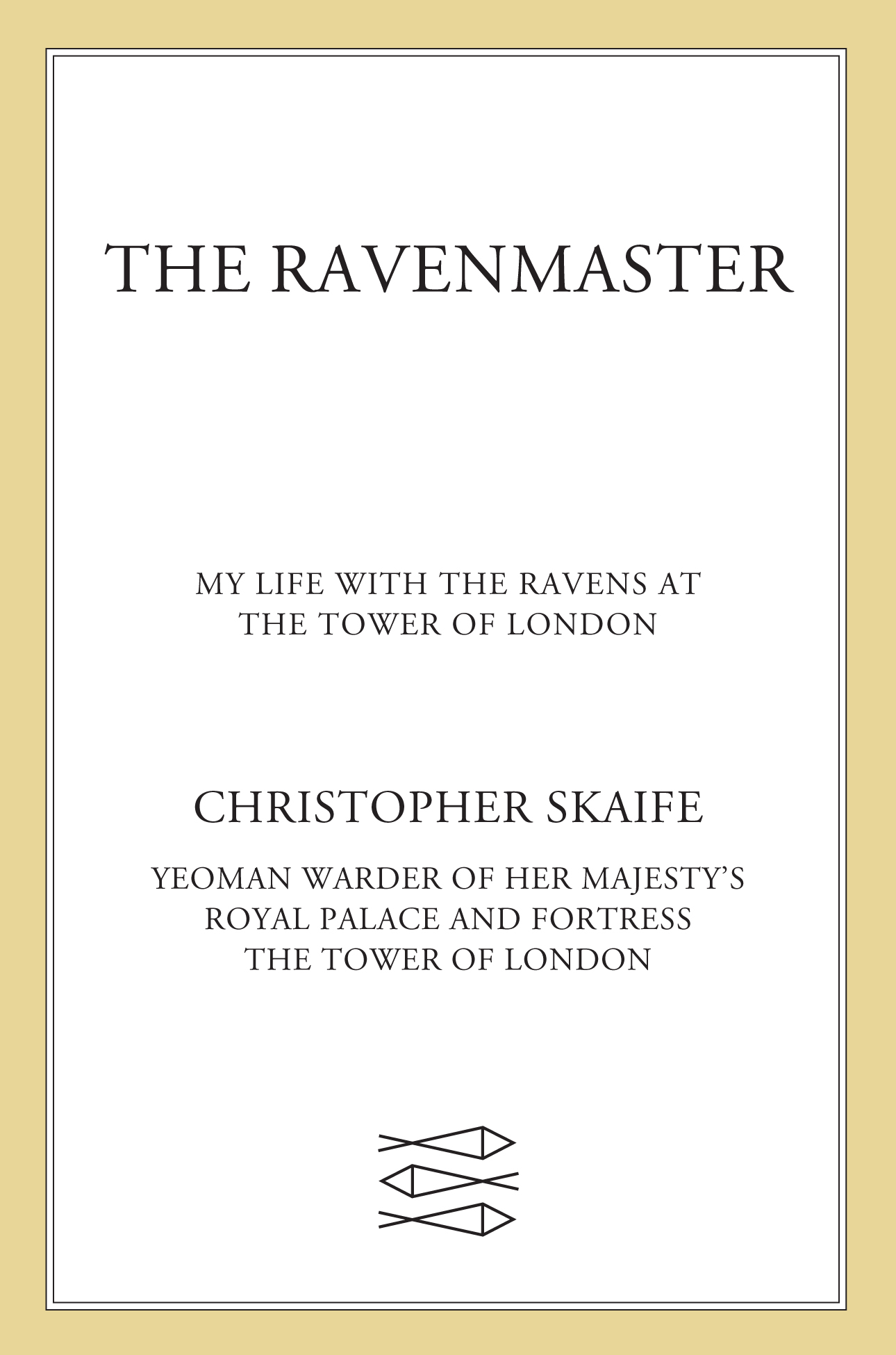Contents
Guide
Pagebreaks of the print version
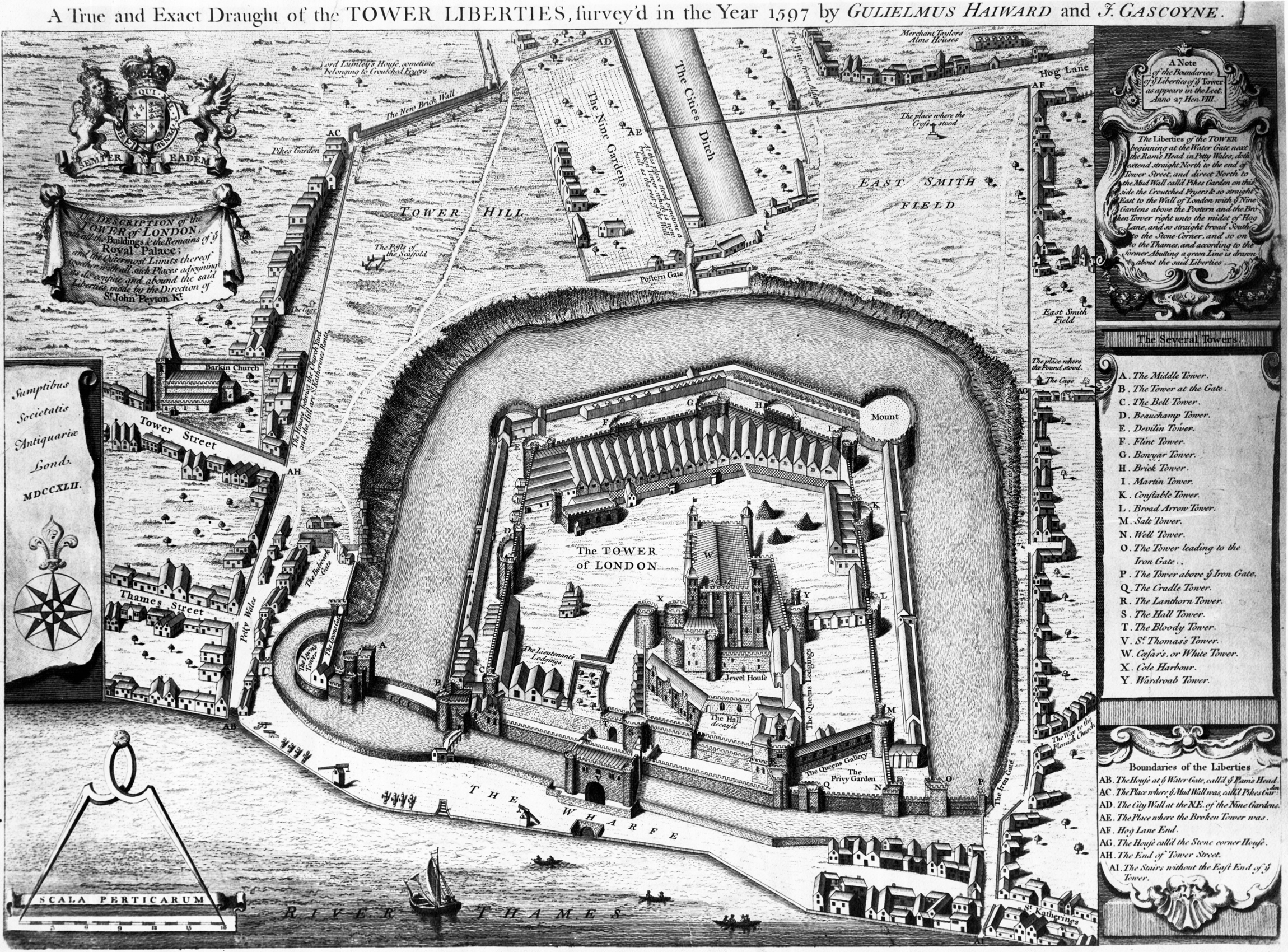

The author and publisher have provided this e-book to you for your personal use only. You may not make this e-book publicly available in any way. Copyright infringement is against the law. If you believe the copy of this e-book you are reading infringes on the authors copyright, please notify the publisher at: us.macmillanusa.com/piracy.
To the ravens of Her Majestys Royal Palace and Fortress the Tower of London And to the memory of Martin Harris
Its 0530. Autumn. First light over London. Im up and out of bed before the alarm. I get dressed in the dark and head straight out the door. No time even for a cup of tea. Theres always that niggling concern that something might have gone wrong overnight. And if things go wrong, things can go badly wrong.
I can already hear the lorries and the white vans and the early morning commuters coming into town. Tower Bridge Road, Fenchurch Street, London Bridge. Theres that humthe sound of the city awakening.
I hurry up the stone spiral staircase by the Flint Tower, the London skyline bright with lights and winking behind me. I see the old Port of London Authority Building, which is now home to a fancy hotel, but was once responsible for the comings and goings of ships all the way up and down the Thames. Behind that stand the Cheesegrater and the Walkie-Talkie and the Gherkin, the big new skyscrapers with their funny little nicknames.
Past the Chapel and the Waterloo Barracks and out onto Tower Green and theres that proper morning smell of London, that mixture of exhaust fumes, the Thames, fresh ground coffee, and the beautiful sweet incongruous smell of fresh-cut grass on Tower Green. Tower Bridge is hunched up ahead, with HMS Belfast reliably anchored on the River to the south.
Theres no one around in the Tower, just me and the shadows of a thousand years of history.
I call out and at first theres nothing but silence. I call out again. Theres always that moment of fear as I scan the skyline. But then I see her: perched on one of the rooftops of the Tower buildings, a silhouette against the blue-gray dawn.
Good morning, I say.
And a good morning it is.
The ravens are at home in the Tower.
I can breathe easy againthe kingdom is safe for another day.
I have what is often described as the oddest job in Britain.
Odd? Maybe.
The best? Definitely.
My name is Chris Skaife and I am the Ravenmaster at the Tower of London.
My official title is Yeoman Warder Christopher Skaife, of Her Majestys Royal Palace and Fortress the Tower of London, and member of the Sovereigns Body Guard of the Yeoman Guard Extraordinary, which is generally believed to be the oldest formed Body of Men in the world still in existence, dating back to the reign of King Henry VII sometime after the Battle of Bosworth Field in 1485. All of us Yeoman Warders are former servicemen and -women, with at least twenty-two years of unblemished service. We are the ceremonial guardians of the Tower of London. In principle were responsible for looking after any prisoners at the Tower and safeguarding the Crown Jewels. In practice, we act as tour guides and as custodians of the rituals of the Tower. We live right here, in the Tower. They say that every mans home is his castle: for us, its literally the case.
How can I begin to explain the Tower to you? It was built as a fortress and a royal palace, but its also been a prison, an arsenal, and the site of the Royal Mint and the Royal Armoury. One of the great early English historians, John Stowwho grew up about half a mile from the Towersummed it up best in his Survey of London , published in 1598: This Tower is a citadel to defend or command the city; a royal palace for assemblies or treaties; a prison of state for the most dangerous offenders; the only place of coinage for all England at this time; the armoury for warlike provision; the treasury of the ornaments and jewels of the crown; and general conserver of the most records of the kings courts of justice at Westminster. That just about covers it. These days we welcome around three million visitors every year.
* * *
There are plenty of famous places for tourists and locals to visit in London. Theres Westminster Abbey, as well as the Houses of Parliament, Buckingham Palace, Kensington Palace, Kew Gardens, Hampton Court Palace, the British Museum, the Imperial War Museums, the Victoria and Albert, the Science Museum, the Natural History Museum. The list goes on and on. If youre the sort of person who wants to see a nice baroque interior, then off you can go to a Hawksmoor church, or if you fancy a nice bit of postwar Brutalism, theres the Royal Festival Hall. If youre looking for a good view, you can go to Hampstead Heath or Primrose Hill, or up to the top of the Shard. Youve got your theaters and your concert halls and your restaurants and cafs. But in my opinionmy humble opinionthe Tower remains without a doubt one of Londons great attractions.
Why? Well, theres the obvious fact that were one of the first attractions. When William the Conqueror defeated King Harold at the Battle of Hastings back in 1066 he decided he needed a sign of his triumph, a monument to his great power and strength, and so sometime around the late 1070s work began on the White Tower, the biggest and boldest building ever undertaken in England. The Tower was intended as a symbol of power and remains so today: in my opinion, the finest example of statement architecture in the country. London may be forever reinventing itself, but the Tower remains. Much of the old city was destroyed in the Great Fire of 1666. Since then, Newgate Prison has gone. Old London Bridge has gone. The great warehouses around St. Katharine Docks have gone. Even during my time at the Tower, London has been transformed: the Shard, the Gherkin, the Walkie-Talkie; Crossrail; the Docklands Light Railway; the gentrification of the East End. Yet right in the middle of it all we still have the Tower. It has seen it all, done it all, been part of it all. It has incredible architecture. Pageantry. A bloody history of murder and torture. Andof courseit has the ravens.
We currently have seven ravens at the Tower. As the Ravenmaster Im the person responsible for their safety, security, and welfare. I look after the ravensand the ravens look after us. Without the ravens, so the legend goes, the Tower itself will crumble into dust and great harm will befall the kingdom.
This book will attempt to answer some of the most common questions I get asked about the Tower ravens. Why are there ravens at the Tower in the first place? Where do our myths and superstitions about the birds come from? How do I care for them? What do I feed them? Who gets to name them? What happens to them when they die? How and why do they stay at the Tower?
What this book is notI should state clearly at the outsetis a scientific study. I am not a scientist, though over the years Ive been fortunate to meet with and assist the many scientists who have come and studied our birds and who have written about them in academic journals and reports. Despite my many years of experience looking after the ravens, I dont have any official bird-related credentials or qualifications. I am not a professional ornithologist. Im really just an average guy with a greater-than-average amount of luck who has been fortunate enough to have spent a large part of my life with some of the most famous birds in the world as they go about their daily business. This book is about my life and work with the Tower ravens, and what it takes to be the Ravenmaster.


